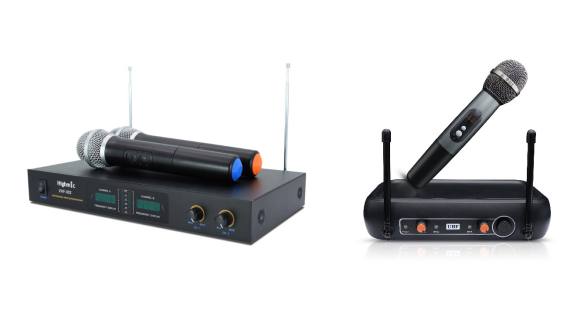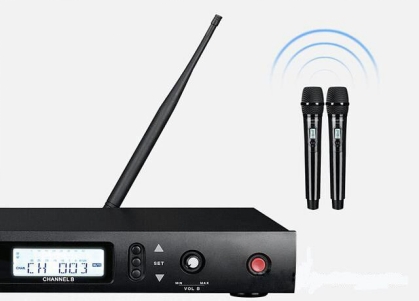1、Can we use the two same frequency at one time ? Cannot be used simultaneously. Wireless transmissions cannot be "mixed" in the air, and even at the same frequency, the receiver cannot receive two mix transmitted signals. For example, two FM radio stations transmit on the same frequency signals, which is not possible. This can cause confusion and audio distortion. In summary, each wireless transmitter should have the unique frequency for the receiver. 2、What bandwidth frequency of the wireless microphone can avoid interference? This depends on the situation, but at least 4MHz. Here we cannot answer this question explicitly because it involves complex calculations. In general, the cheap wireless systems require a larger frequency difference because their receivers are simpler to design and have fewer options. This limits the number of compatible channels. The system with higher price has better filterability, the distance between channels is closer, and the compatible channels are correspondingly increased. If we say "you don't want to do your own calculations", you must be right. If you need please contact the manufacturer or agent who will help you calculate. Most manufacturers have calculated the compatible frequencies of the Shure's wireless features, so you don't need to do these cumbersome mathematical calculations. 3、UHF bettwe than VHF,right? The microphones between two band have their own advantages and disadvantages. This is according to the user , the physical characteristics of the frequency band, and the adjustment limits of the frequency band.
Here are a few aspects of UHF over VHF: 1) VHF band is very “crowded”. 2) UHF frequency range is more widely used. 3) UHF provide more compatible systems. [For example, Shure LX and SC (VHF band) systems can provide 12 compatible channels, while Shure's UHF band system can provide more than 100 compatible channels. ] 4) UHF system has higher power output than VHF, wider frequency band, better dynamic range and better signal-to-noise ratio than VHF. VHF have several aspects than UHF: 1) VHF systems are cheaper. 2) VHF has a larger transmission range at a specified transmit power. 3) VHF signal transmission, even through non-metallic substances. VHF has a longer wavelength and not easily absorbed by the body. 4. Can UHF systems be compatible use with VHF systems? Yes, even if the number of compatible VHF systems reach the Max, it is also compatible with UHF. (but cant use the the current VHF antenna `VHF splitter of the UHF receiver, or the VHF antenna distribution connect to amplifier). 5、The receiver and microphone both open ,but cant match? There are two possibilities:
1) If the receiver and the microphone are not in same frequency points, please replace any one with the same frequency. If the PLL are the same model and the frequency range is also the same, the frequency selection may be wrong. Please change the channel selection to the same correct frequency point. 2) Microphone failure If the above two frequency are the same, one of the microphones or receivers maybe broken , and use another microphone with the same frequency to test. If can work with the receiver, the original microphone is broken ; or Test with another receiver with the same frequency. If can work, the original receiver is faulty. 6.if the microphone cant be open? Check whether the battery is weak or fills incorrectly. 7. What should do if the signal transmission distance is short and broken? 1) Please check if the antenna is installed correctly. 2) Please check if the battery weak and signal indicator is lit. 8. What is the reason for the speaker noise? 1) The microphone may malfunction and affect the proper current supply. (2) Do not share the AC outlet plug with other appliances.
|






